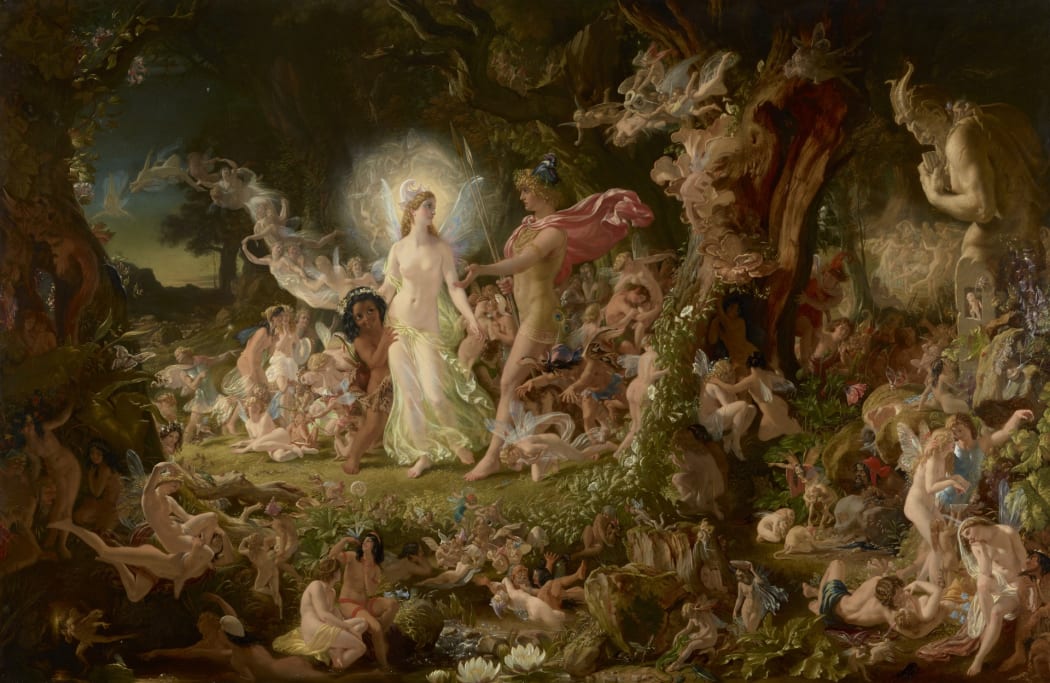
The elder of these, Amelia Paton (1821-1904) was a largely self-taught sculptor of considerable ability. She could, probably should, have become our first woman member but sadly that was not to be. Amelia’s husband, the Academy’s long-serving Secretary David Octavius Hill RSA – whom she married in 1862 – did support the addition of women to our ranks but was unsuccessful in his attempts to change wider opinion at that time. We have celebrated her bi-centenary and her contribution to Scottish Art both through a social media post and also in collaboration with the Amelia Paton Walking Tour.

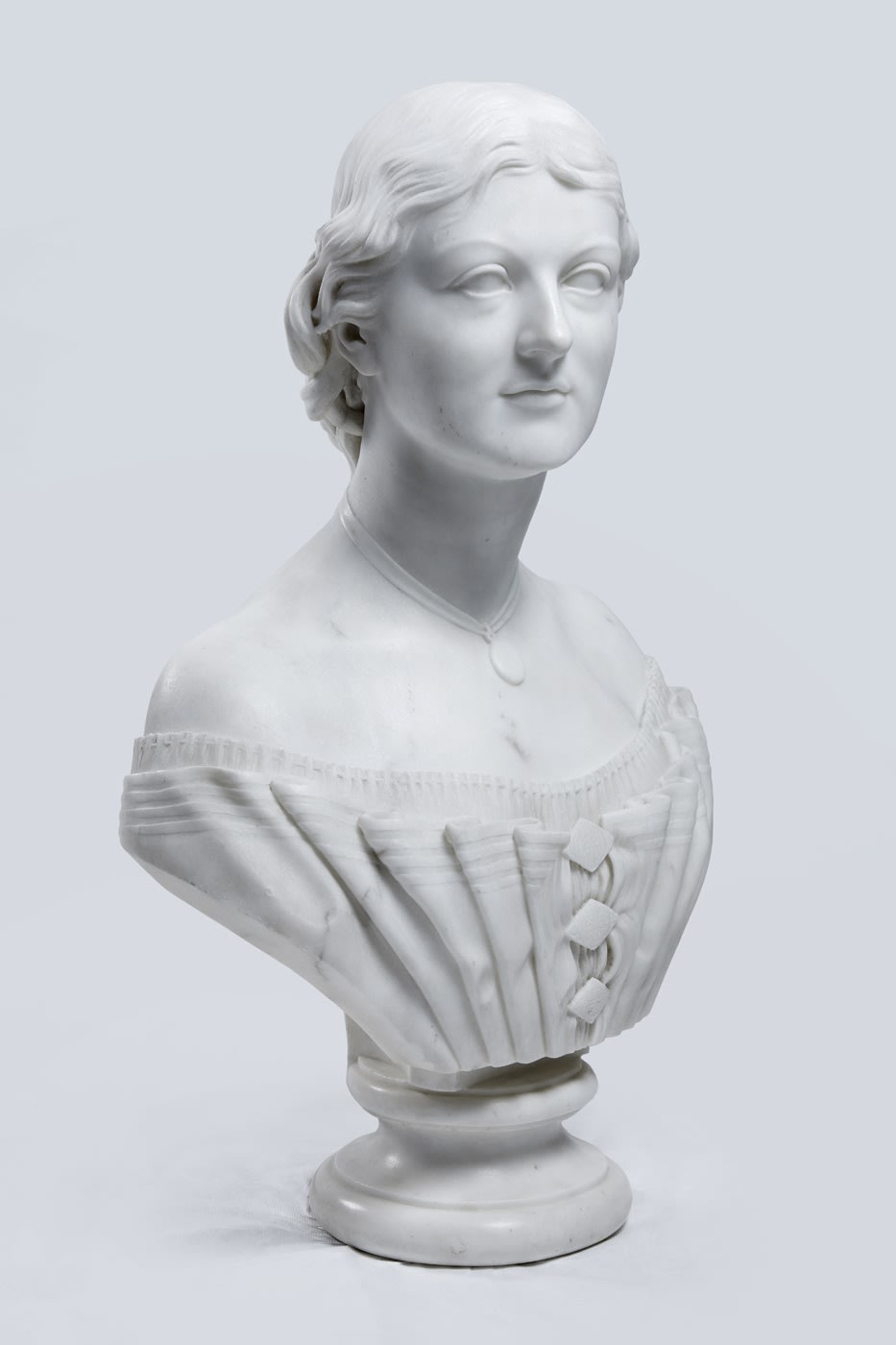
Amelia Paton Hill (1821-1904), Portrait bust of Lady Emily Merelina Shand (1840-1911), marble, 70.0 x 43.0 x 25.0cm, around 1864-5, Gifted by Mrs Peel, the sister of the sitter, 1918. 1998.029
Amelia was just 11 months old when her brother Joseph Noël Paton was born on 13 December. He took his first name from his father, who had studied as an artist, and was by profession a designer of patterns for damask. His middle name reflected the season in which he was born.
J N Paton, received his first introduction to art from his father, and from an early age displayed an ability in this field. At the age of 17 his father was approached by William Sharp, a partner in the firm of Sharp, Brown & Co, muslin manufacturers in Paisley, which found itself suddenly in need of a Head Designer. In a display of faith, uncommon in such circumstances, Paton’s parents were apprehensive about taking him away from his pursuing a career in art. However the young man was eager to prove his independence and he took on the vacant post, sticking at it for the next three years.
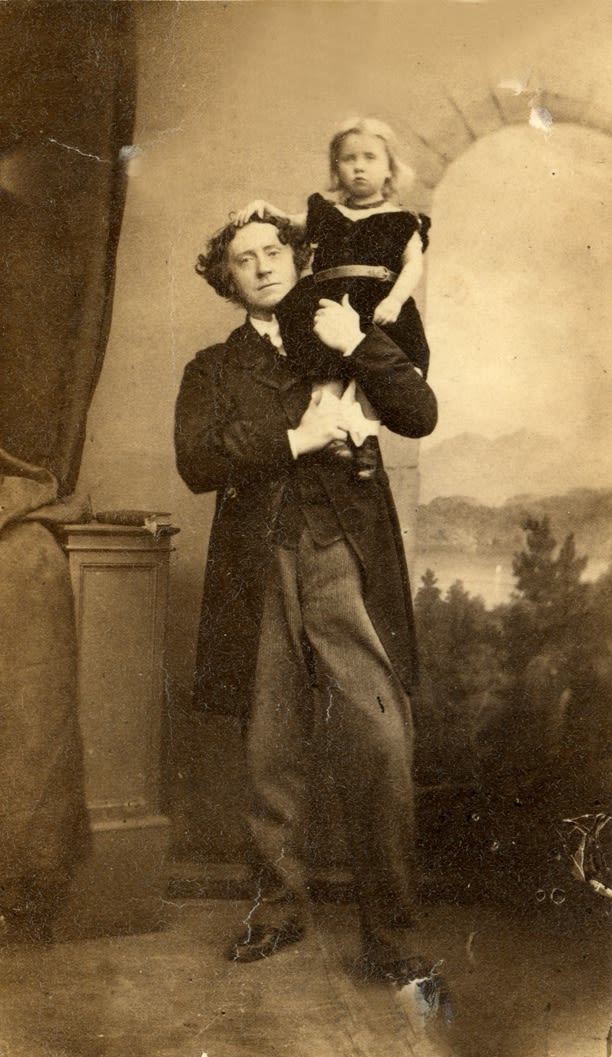
Unknown photographer (possibly James Good Tunny), Sir Joseph Noel Paton with his daughter, collodion photograph
In 1843 he left Paisley for London where he enrolled as a student in the Royal Academy Schools, but he did not settle well and was soon on his way back north. He did however forge a lifelong friendship with a future President of the Royal Academy, [Sir] John Everett Millais, who was amongst his contemporaries at the RA Schools, and with whom he later shared an interest in the sort of work which inspired the artists of the Pre-Raphaelite Brotherhood of which Millais was a member.
It was during his stay in London, however that Paton’s work first came to public notice. This was the publication of his series of outline etchings illustrative of the works of Shakespeare, Milton, and Shelley.
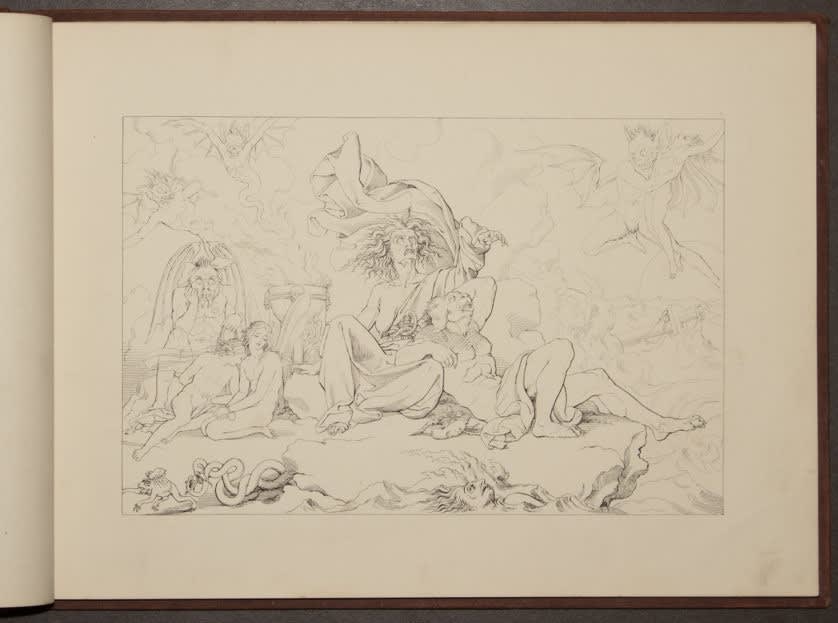
Sir Joseph Noel Paton, RSA (1821-1901), Compositions from Shakespeare’s Tempest (Edinburgh: William Nimmo & Co, 1877)
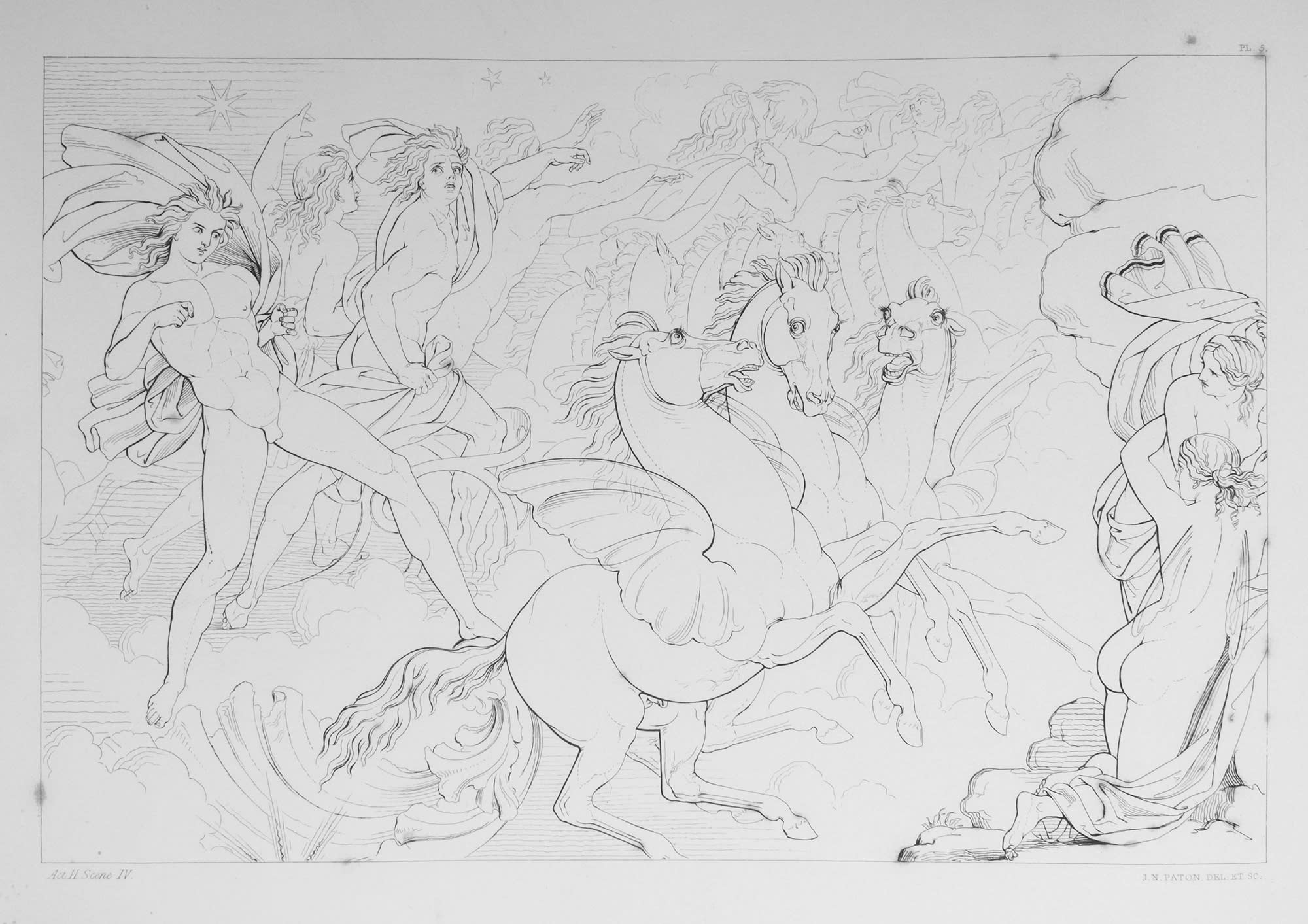 Sir Joseph Noel Paton, RSA (1821-1901), Compositions from Shelley’s Prometheus Unbound (Edinburgh: William Nimmo & Co, 1877)
Sir Joseph Noel Paton, RSA (1821-1901), Compositions from Shelley’s Prometheus Unbound (Edinburgh: William Nimmo & Co, 1877)
On the back of this, on his return to Scotland he exhibited for the first time in the Royal Scottish Academy’s Annual Exhibition in 1844. His exhibit that year, The Gleaner, like his solitary exhibit at the 1845 Annual, Rachael Weeping for her Children, both looked to Biblical stories for their inspiration, and in the same year (1845) he sent a large cartoon, “The Spirit of Religion,” to the Westminster Hall Competition. Paton’s drawing received one of three premiums awarded, and in 1847 he met with a like success for two further works which he sent in competition.
A figurative artist, Paton was amongst the most rounded of his contemporaries in the breadth of his inspirational sources. As well as looking to The Bible, he was also inspired by aspects of earlier Scottish and English History, religious and contemporary history, and literary sources including Virgil, and Dante, as well as poetical writings both Scottish and English.
In this latter regard he is perhaps best known for his interpretation of Shakespeare. His exhibits at the 1847 RSA annual Exhibition included two oil paintings based on A Midsummer Night’s Dream, and a third taking an incident from English history, the seizure of Sir Roger Mortimer, Earl of March, by King Edward III.

Sir Joseph Noel Paton, RSA (1821-1901), The Reconciliation of Oberon and Titania, oil on canvas, 1847. National Galleries of Scotland (Purchased by the Royal Scottish Academy 1848; transferred and presented to the National Gallery of Scotland 1910)
The pair illustrating A Midsummer Night’s Dream featured Puck and the Fairy from Act 2 Scene 1, and the Reconciliation of Oberon and Titania from Act IV Scene 1. The latter was intended as a companion to his Oberon and Titania; The Quarrel, which he had shown the previous year. It was also one of his submissions for the Westminster Hall Competition that year. This explains his choice of subject matter; the appeal of Shakespeare to an English-based Parliament stood him in better stead of success than, for example, selecting a scene say from the life of Wallace or Bruce.
The Oberon and Titania pictures are often cited as being prominent against their contemporaries in Scotland because of the amount of naked, or partially draped flesh which they feature. However, there was no sense of salaciousness either in their presentation by Paton, nor in their reception by the press when first exhibited.

Sir Joseph Noel Paton, RSA (1821-1901), The Quarrel of Oberon and Titania, oil on canvas, 1849. National Galleries of Scotland (Purchased by RAPFAS 1850; transferred to the National Gallery of Scotland 1897)
Writing about the Quarrel painting, the Caledonian Mercury reviewer wrote; “This exquisite work is of a high order, and excites the more wonder, when it is considered that it is the production of a young man of 22 years of age……….. The present subject is as delightful a one, and evinces great fertility of invention in the painter. His airy people are of exquisite forms, varied only occasionally by an erratic cast of countenance, just sufficient to give piquancy to their expression, and to remove them from ordinary nature…………. The light is excellently disposed, falling chiefly on the two principal figures, and rounding off towards the less important figures at the sides. In all the groups, the fanciful occupations of )which are ingeniously varied, there is equal beauty of form and grace of expression, The only wish we feel on beholding the picture, is that the pale moon had but blushed a little red upon such pure and marble forms, and had so imparted to them a very little more of the warm aspect of reality.”
From the Academy, the work was subsequently shown in Liverpool where it was described as possessing a wonderful effect; “The subject is the Interview of Oberon and Titania, in the “Midsummer Night’s Dream.” The colouring is singularly dream-like in its lightness ; the leading figures of infinite grace and beauty, combined with the grotesque character of their impish attendants. Both as a highly poetical description of the scene and a work of high art, it cannot escape prominent notice.”
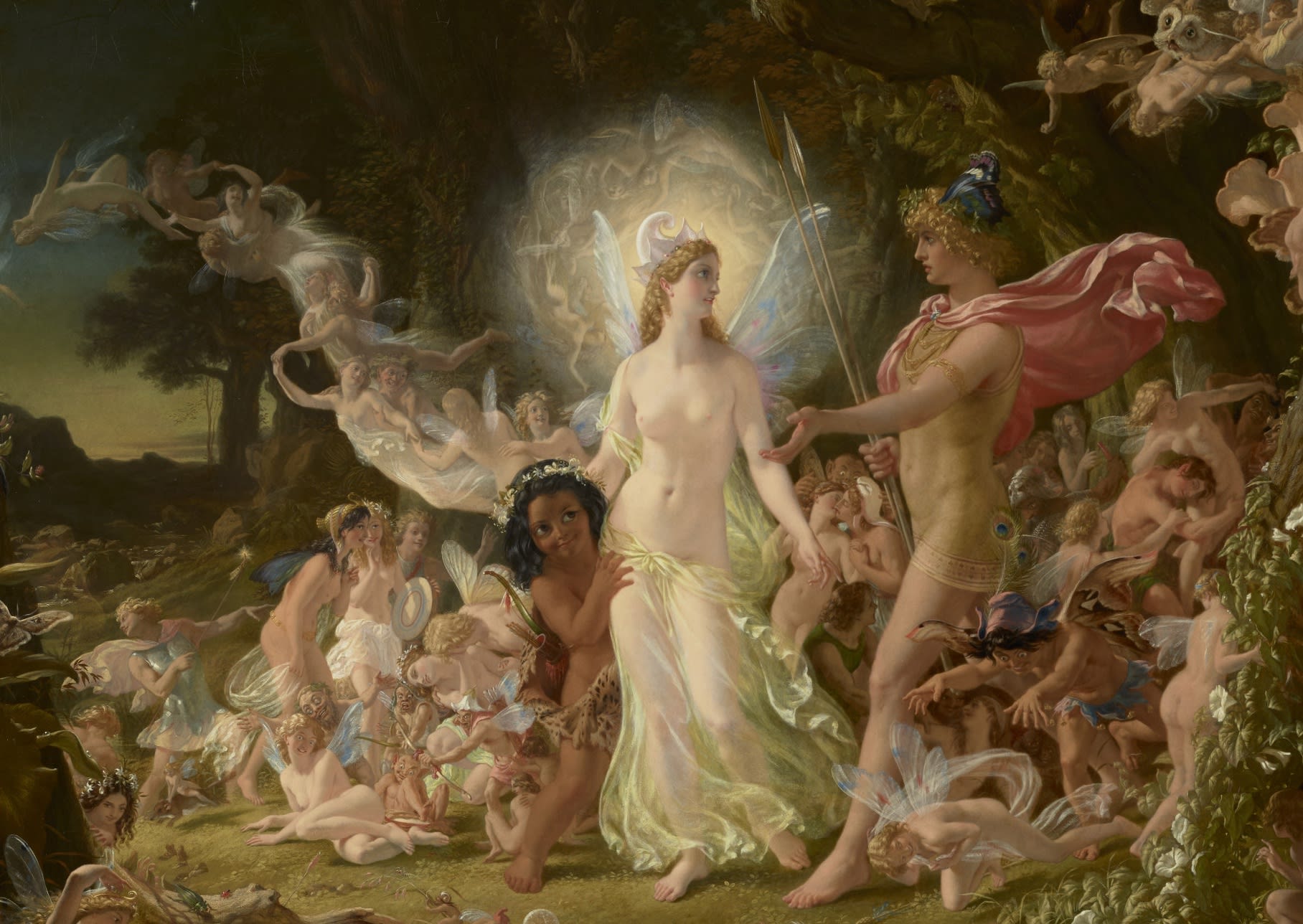
Sir Joseph Noel Paton, RSA (1821-1901), The Quarrel of Oberon and Titania, oil on canvas, 1849. National Galleries of Scotland. Detail
When the same work was displayed in Paris in 1855 the subtlety of Paton’s handling was not lost on those who reported it in the French press; “At first sight, doubtless one is repelled by a peculiar colouring, and a quaint mode of washing in oil, which, combined with the complex grouping of the figures, are apt to prompt an unfavourable criticism. But we must not decide rashly. Ponder awhile over the canvass, wait till you get used to the pale moonlit scene—to the preternatural shifting of the reflected lights, scintillating motes, and phosphorescent glare which perplex the arrangement of the figures, you will find that the picture is fascinating and every time you see it you will admire it more and more, till at length you will never enter the gallery without being won to the spot where it hangs….”
The works are remarkable therefore as the product of the imagination of a young man in his early twenties and without any formal artistic training of note. As Francina Irwin, one of the leading art historians to re-appraise Scottish art in the 1970s noted, Paton was the only Scottish painter of his generation to make extensive use of the nude in his paintings. This statement perhaps overlooks the contribution in this area of the work of David Scott RSA (1806-49) and also fails to contextualize Paton’s own work.
It was thanks largely to the Academy’s purchase, and subsequent commissioning of a series of large paintings by the north of England painter, William Etty RA HRSA (1787-1849) that a Scottish exhibition-going public first encountered depictions of the human form unclothed.

William Etty HRSA (1787-1849), Sketches for Judith Series, oil on canvas laid on board, 1827-28. Gifted by Sir James Linton, London, 1891. 1992.060.1
At the Royal Academy Schools Paton would have been introduced to drawing from casts of classical sculptures of male and female nudes, and from 1840 this traditional and time-honoured method of training for artists was taken up by ourselves with the launch of the RSA Life School. This provided an advanced level of study, with the students drawing from live male and female nude models. Scott was one of our members to be associated with the RSA Life School as a tutor, or “visitor” and this experience no doubt helped to inform his own artistic practise.

David Scot RSA (1806-49), Album of 96 life drawing studies largely by David Scott RSA with one by his brother William Bell Scott HRSA, chalk, 1827-49. Gifted by 1907. 2014.436.1-82
Paton’s adjustment in his Quarrel picture of the proportion of the two leading figures to those subsidiary figures is not a sign of any shortcoming but rather a carefully considered solution by which to convey their status against the fairy folk. Similarly the cool lighting has been consciously arrived at to further emphasise the magical impact of the scene and to remove the naked forms even further from any illusion of reality; to deliberately diffuse the works from any perceived sense of impropriety. To view them in any other way is to miss the artist’s original intent.
1846 also marked Paton’s election as an Associate (ARSA) of the Royal Scottish Academy, and his elevation to full Academician rank (RSA) just four years later is evidence of his meteoric rise, and all achieved whilst still in his twenties.
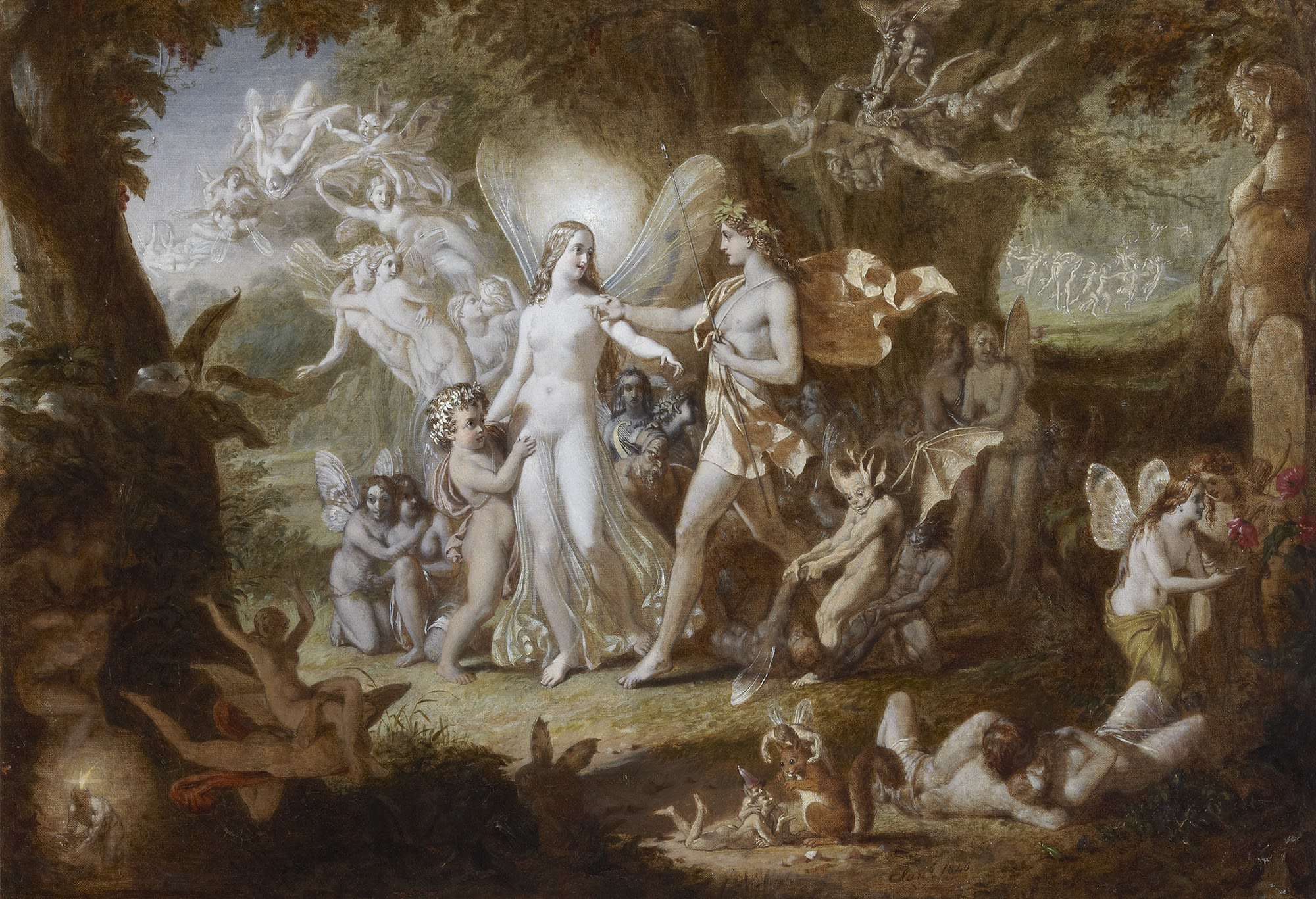
Sir Joseph Noel Paton RSA (1821-1901), Oberon and Titania – first study for The Quarrel, oil on canvas, 1846. RSA Diploma Collection Deposit, 1850. 1995.009
On becoming a full Academician, in accordance with our rules, Paton deposited his oil sketch for the Oberon and Titania Quarrel picture as his Diploma Collection work. Two years previous, his companion work, the Reconciliation of Oberon and Titania had been purchased by us for the huge sum of £1,000. This work was one of a number from our collection which were transferred to the National Gallery of Scotland in 1910. Also in 1850, his finished version of the Quarrel picture was purchased from our Annual Exhibition by the Royal Association for the Promotion of the Fine Arts in Scotland. This work was also subsequently transferred to the National collection, in 1897.
It was in 1850 too that we decided that it would be desirable to have a Presidential Medal to be worn on special occasions as well as when chairing important Academy business. The opportunity of designing it fell to young Paton. Sadly he was prone, throughout his life, to bouts of illness, many being brought on it would appear not through any inherent weakness in his constitution but rather aggravated by stress. As a result of one of these episodes, it was not until 1853 that Paton’s designs for the gold medal were approved by RSA Council and posted to Benjamin Wyon (1802-58), the leading London medallist and die-maker. On accepting the order in March 1853, Wyon indicated a lead-in time of 8 months but the finished medal was not received in Edinburgh until January 1855, the start of the year in which we moved into the newly erected joint Academy-National Gallery building on The Mound.
So well-received was the medal, that it was agreed that the die for it be used to strike copies in silver to be given to those of Academician rank, and in bronze for Associates and Honorary members. Paton designed the keep-cases in which the medals were presented, and was also asked to design the distinctive double drop-loop chain and swivel attachment for the President’s Medal, which continues to be worn by our President to the present day.
Its obverse face carries the legend ROYAL SCOTTISH ACADEMY OF PAINTING SCULPTURE AND ARCHITECTURE in a circle around a tripod on which rests a laurel branch dividing the inscription “INSTI / 1826 / INCOR / 1838”, the whole contained within an outer edge border of laurel branches; The reverse face is dominated by one of Paton’s characteristic figures; the naked figure of Mercury kneeling left supporting lighted lamp on whose rim at left stands Pegasus rearing right with details of designer and medallist beneath.
This was not the only medal which Paton designed. In 1877 Captain Maclaine Watters, a keen patron of the arts, commissioned Paton to design a medal which he had endowed to be presented in his name to the best student in the RSA Life School.
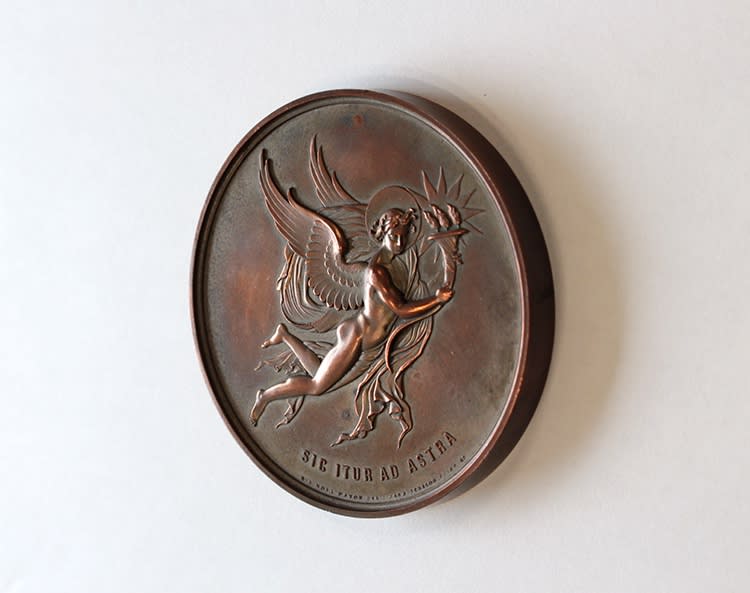
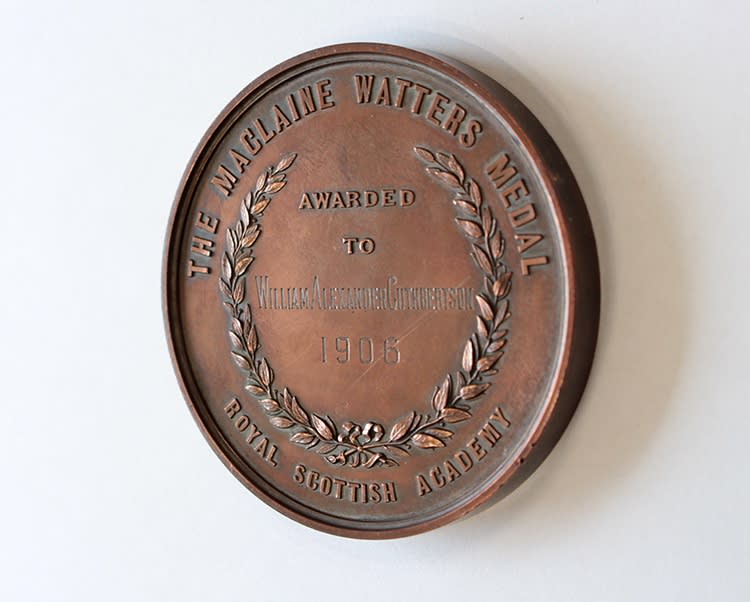
William Alexander Cuthbertson (1883-1966) recipient; Sir Joseph Noel Paton RSA (1821-1901) designer; James Aitchison (b.c.1839, d.1921-03-27) medallist, RSA Maclaine Watters Medal, bronze, 1906[1878]. Gifted by the descendants of William Alexander Cuthbertson, 2020. 2020.0011
In common with many of his contemporaries of the time, his paintings were not produced as spontaneous works of art, but rather only after countless preparatory sketches, working drawings, and sketches in oil had been made. But Paton did not restrict himself to painting. He executed a number of designs for stained glass windows, of which at least one, in Dunfermline Abbey commemorating Robert the Bruce, whose body is buried there, was completed, and installed in 1882. He also worked in sculpture, although his most ambitious project in that field, a Monument planned for the centre of Edinburgh and commemorating the Scottish Wars of Independence, and featuring lager-than-life figures of William Wallace and Robert the Bruce, failed to materialise.
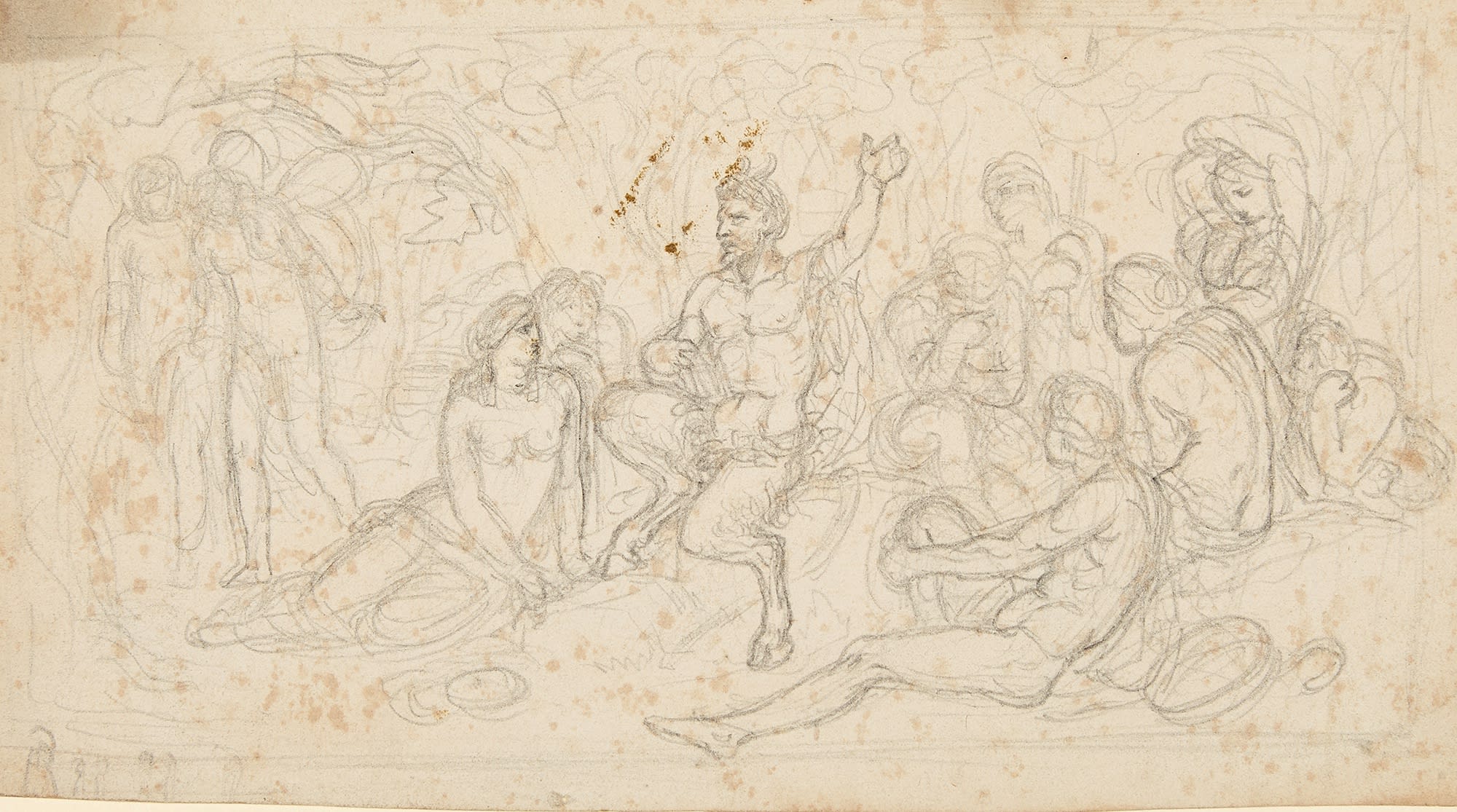 Sir Joseph Noel Paton, RSA (1821-1901), Compositional sketch of Pan addressing semi-naked males and females in a forest clearing. 2014.389
Sir Joseph Noel Paton, RSA (1821-1901), Compositional sketch of Pan addressing semi-naked males and females in a forest clearing. 2014.389
He also provided numerous book illustrations, thus providing a steady source of income away from the need to sell his paintings via the annual exhibitions mounted by ourselves, the Royal Academy, and other provincial centres, including Aberdeen, Glasgow and Liverpool. These illustrations helped keep Paton’s name in the public view, and in this the publication of engravings after his paintings also played a key role.

William Henry Simmons (1811-82), Hesperus the Evening Star, Sacred to Lovers (Tenyson) (after Sir Joseph Noel Paton RSA), mezzotint pub 1863-01 Gifted by Thomas Alexander Hill 1866. 1995.081
In many of these enterprises he drew heavily on the collection of arms and armour begun by his father, and developed by himself, to provide a sense of historical authenticity to his works. It was not just as a consumer or illustrator of literature that he excelled. In keeping with several other artists, he also turned his hand to poetry, which he wrote with some aptitude. He published two volumes of his poems ; Poems by a Painter in 1861, and Spindrift six years later.
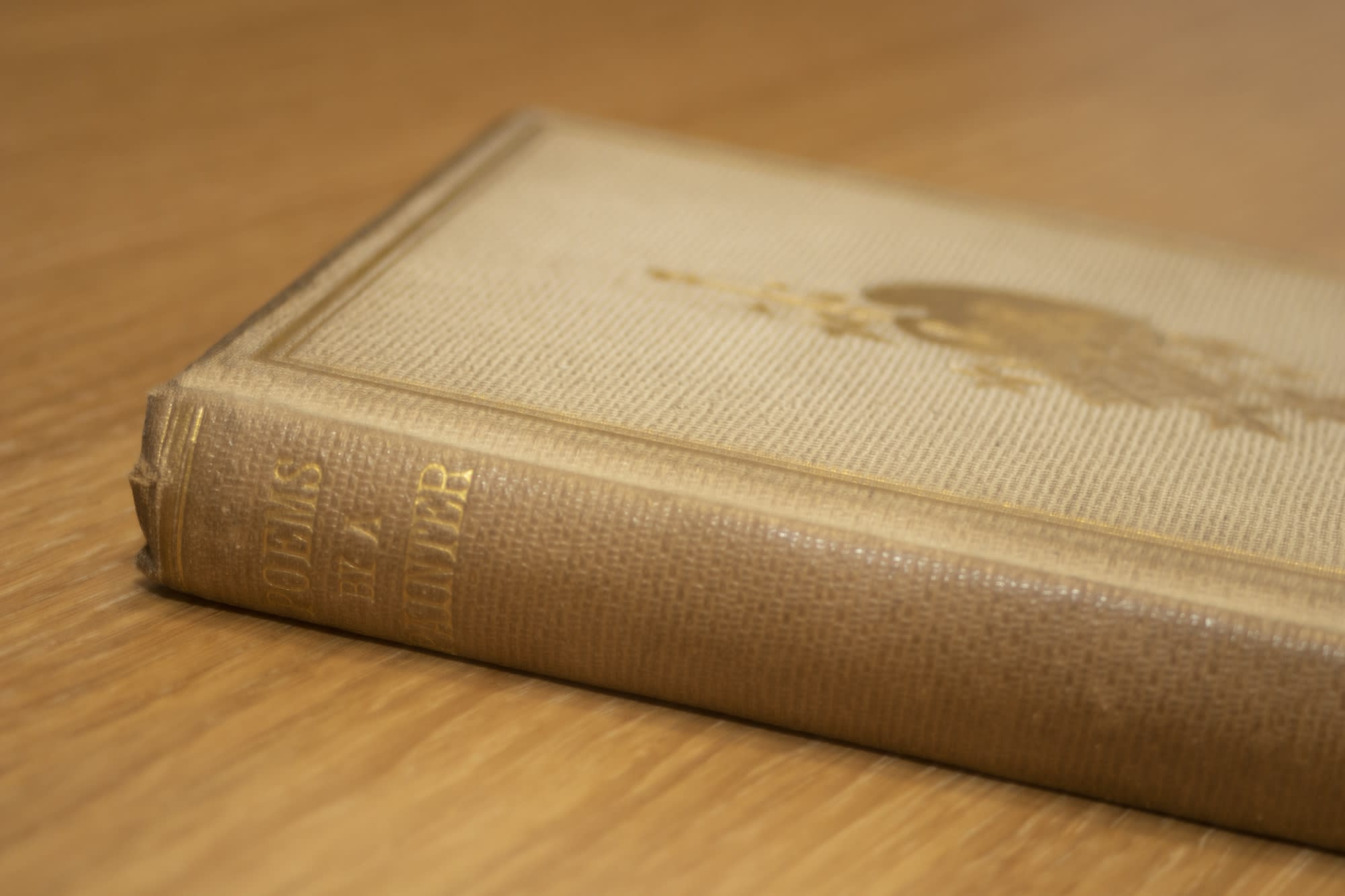
Sir Joseph Noel Paton, Poems by a Painter (Edinburgh & London: William Blackwood & Sons, 1861)
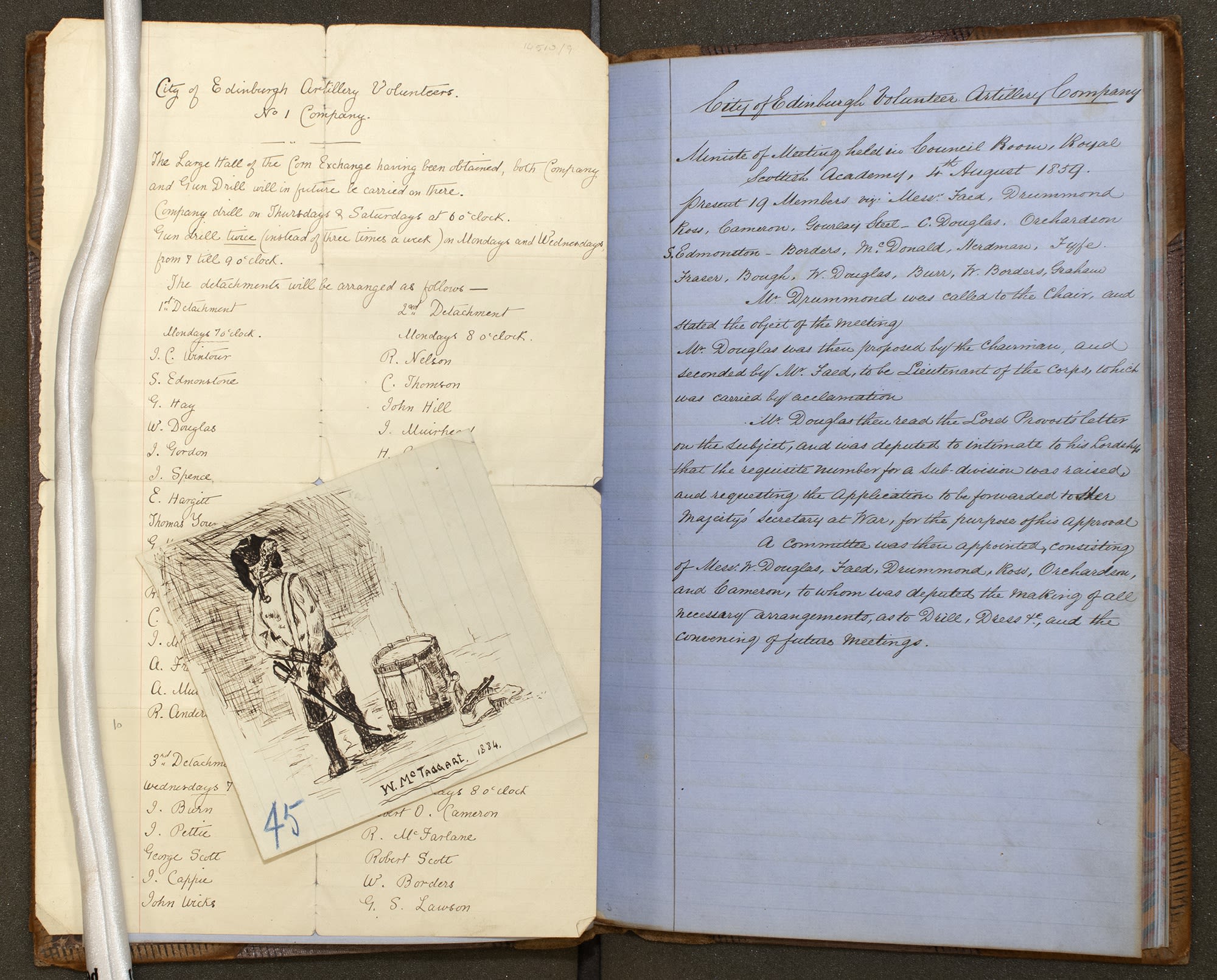
Minute book of the No.1 Company of the City of Edinburgh Volunteers (Artists’ Company)
Perhaps it was this private collection of arms and armour that inspired Paton to get involved with the establishment of No.1 Company of the City of Edinburgh Volunteers (Artists’ Company) which was founded in 1860. At the second General Meeting held in October 1860 Paton was appointed Captain of the Company. He was subsequently involved in designing the cap-badge, then designing the frock coat tunic and deciding on the colour of the trousers. Probably drawing on his own collection of weapons and general knowledge of antiquities (like his father he was a member of the Society of Antiquaries of Scotland) Paton also recommended that the company should be armed with sword bayonets for their rifles, as being superior to both the long and the short artillery swords.

Sir Joseph Noel Paton, Design for flyer for fundraising evening of the No.1 Company of the City of Edinburgh Volunteers (Artists’ Company), Royal Scottish Academy, 22 March 1860
Paton was responsible for the design of a ticket advertising an evening’s entertainment to raise funds for the Company, which was held in the RSA Galleries of the shared Academy-National Gallery building on 22 March 1860. By this date he had also designed our Season Ticket for attendees at the Annual Exhibition, as well as the catalogue cover for the Annual Exhibitions of 1852 and 1853.
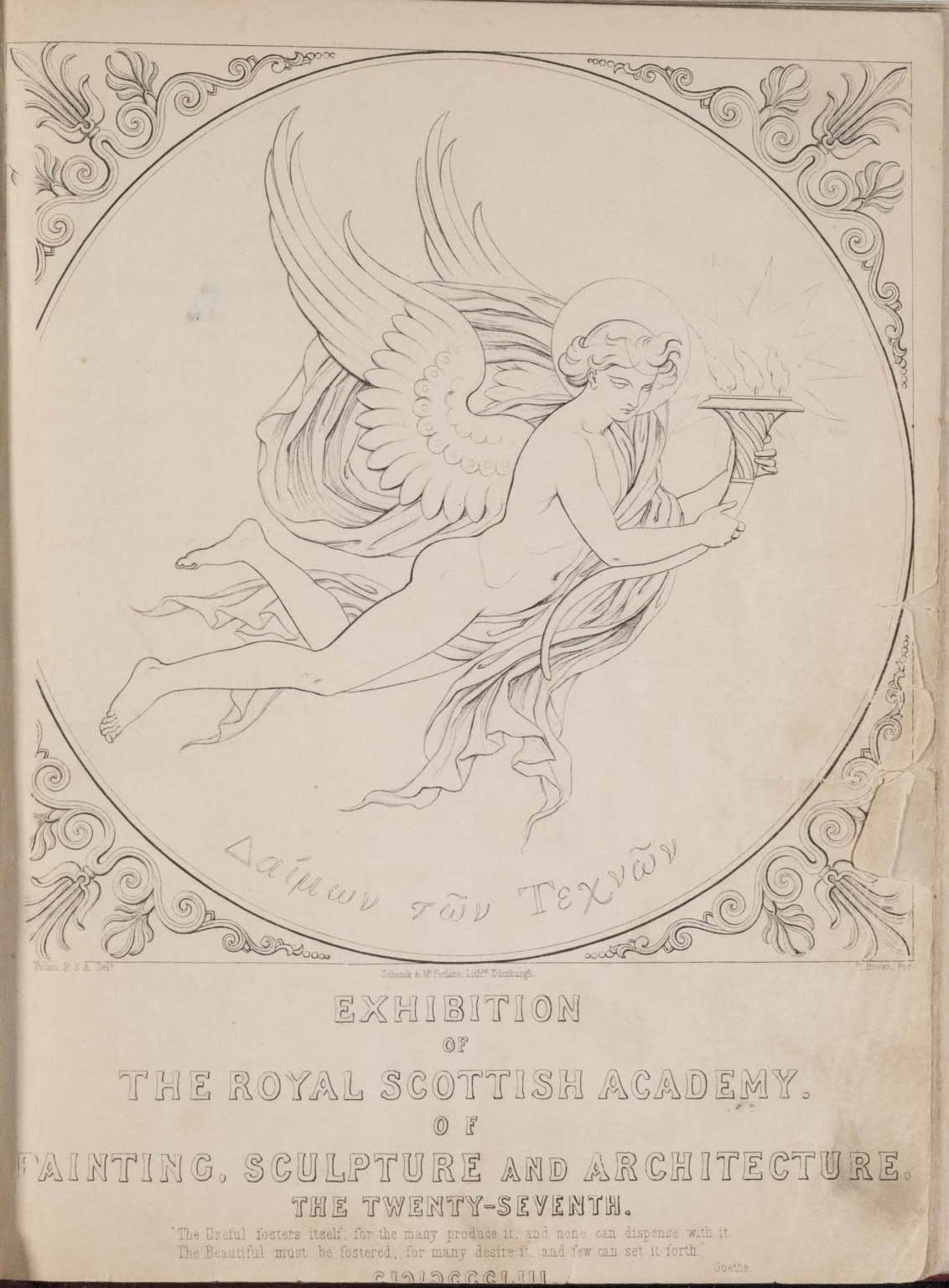
Sir Joseph Noel Paton, Design for the Twenty Seventh RSA Annual Exhibition of Painting, Sculpture and Architecture, 1853
In 1864, on the death of Sir John Watson Gordon PRSA (1788-1864), Paton was named his successor as Her Majesty’s Painter and Limner in Scotland, the fifth artist to hold the office since its revival in 1823 when Sir Henry Raeburn (1756-1823) was installed. Paton was the last artist to be appointed to this largely honorary office by Commission under the Privy Seal. Following his death there was an hiatus of 7 years before Robert Gibb RSA (1845-1932) was appointed to succeed him in 1908.The list of successors has been intermittent since, with the last holder being Dame Elizabeth Blackadder DBE, RA, RSA (1931-2021).
It was partially in recognition of his holding this office that Paton was knighted by Queen Victoria on 26 March 1867 in an unique ceremony held at Windsor Castle. Paton was accompanied that day by our then President, George Harvey (1806-76). Harvey was there to receive his knighthood too. It remains the only time that two of our members have been so honoured at the same investiture.
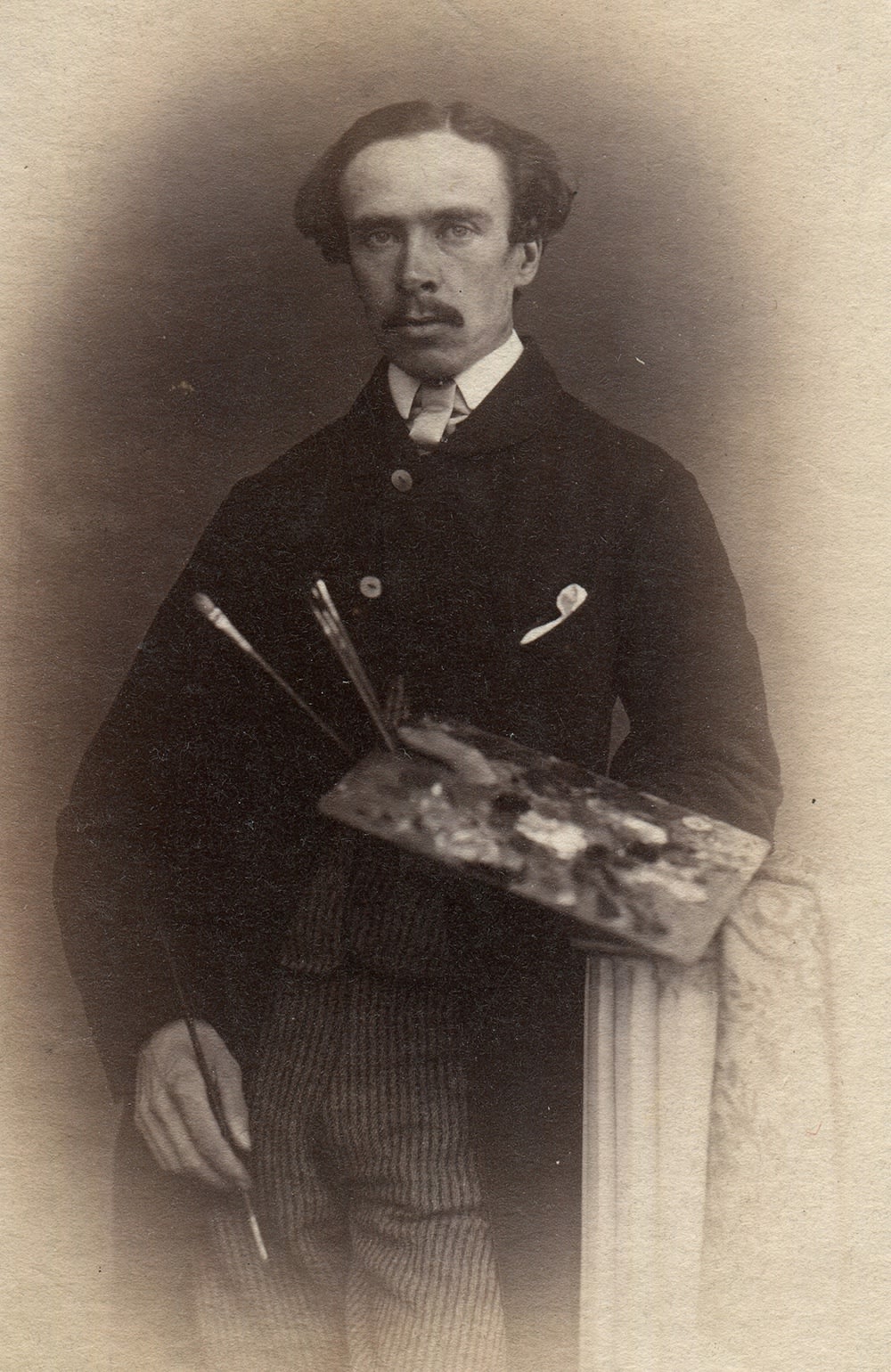
Unknown photographer, Joseph Noel Paton with paintbrush and palette
When Sir George Harvey died in office in 1876, Paton was one of those approached to have his name put forward as his successor, but he declined. History repeated itself in 1891 when Sir William Fettes Douglas PRSA died in office, and Paton again turned down the chance of succeeding him.
By this time Paton had become attracted to Swedenborgian mysticism and the work of William Blake, and from about 1870 onwards his paintings are primarily religious in subject matter. Although he continued to exhibit regularly at our Annual Exhibitions up to his death, and maintained a wide circle of friends with whom he kept in contact, he became more reclusive as he grew older. With his wife Margaret Ferrier, whom he married in 1859 and who predeceased him in 1900, he fathered eleven children.
The University of Edinburgh conferred on him the Honorary Degree of LL.D. in 1876. The previous year he had been a co-founder of the Cockburn Association, established to keep a guardian eye on planning proposals which might have a detrimental effect on Edinburgh’s historic streetscapes and buildings. He served on its Council until 1885, alongside Robert Herdman RSA (1829-88), when Paton was elected its Vice-President, a post he held until his death.

Waller Hugh Paton RSA (1828-95), Lamlash Bay, Isle of Arran, oil on canvas, 1865. RSA Diploma Collection Deposit, 1865. 1994.038
His younger brother, Waller Hugh Paton (1828-95) who is best known for his well-lit watercolours of the Scottish landscape, was also elected to the RSA, as an Associate in 1857 and as a full Academician in 1865.
Sir Joseph Noël Paton was found dead in bed at 7.30am on 26th December at his residence, 33 George Square, Edinburgh. Born in the season of Noel, he passed away just short of a fortnight after his 80th birthday, and just over 11 months after the death of HRH Queen Victoria, a monarch with whom he had long been associated.
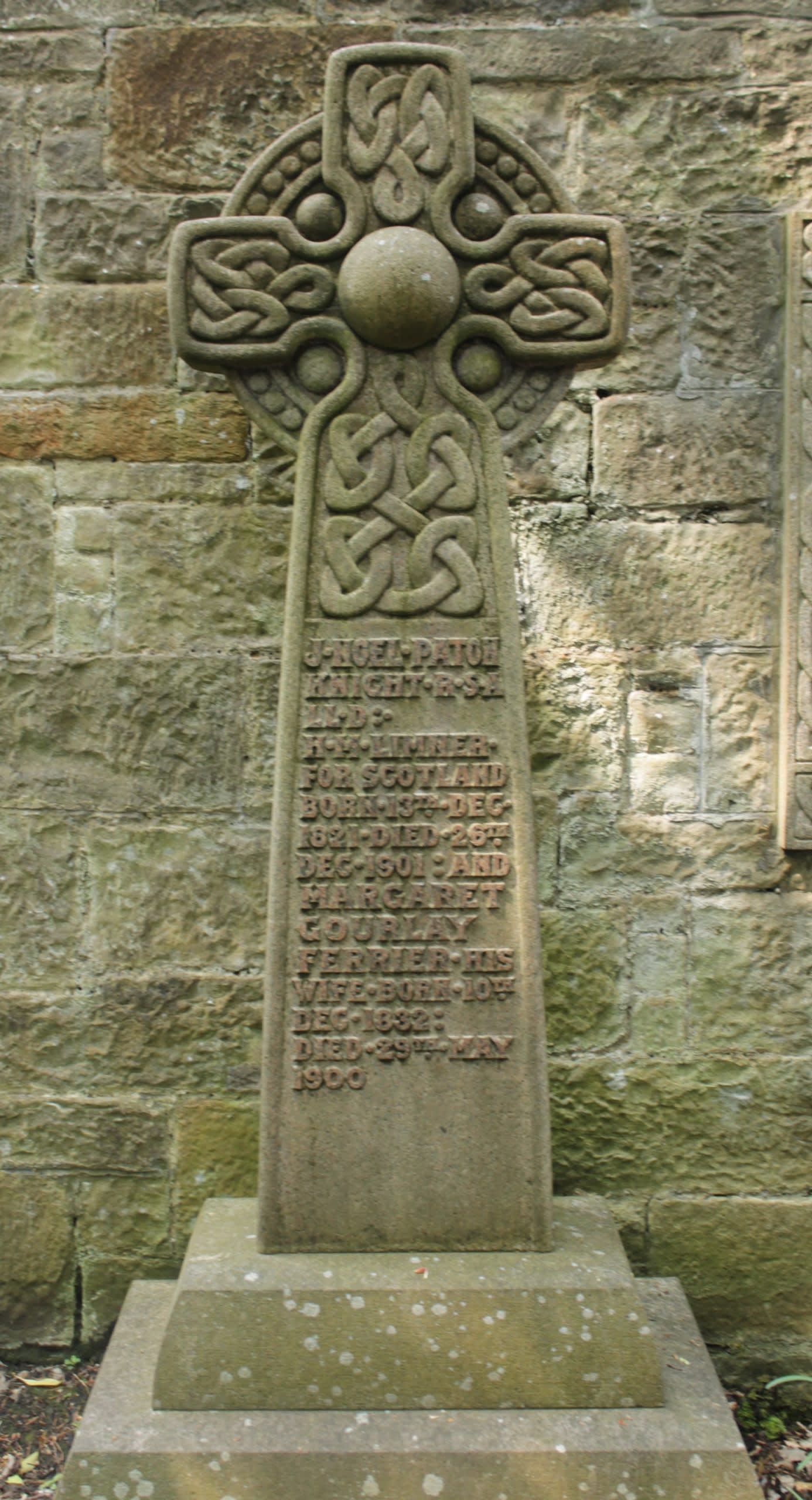
The grave of Joseph Noel Paton, Dean Cemetery, photograph by Stephen C Dickson
He was buried alongside his wife in Edinburgh’s Dean Gallery, the Celtic Cross headstone being a replica of that which Paton and his brother Waller had erected over the grave of their parents and other siblings in the graveyard at Dunfermline Abbey Church.

Paton’s monument to his parents and siblings who died in childhood, Dunfermline Abbey, photograph by Stephen C Dickson
Despite being so prominently in the public eye during his lifetime, Paton’s work has still to be fully appreciated and published. It took until 1967 for the Scottish Arts Council to support the only major exhibition of his work yet mounted, Fact and Fancy, which opened at Glasgow’s Kelvingrove Art Galleries. No satisfactory monograph has yet appeared, although some fascinating background was provided in a small publication of 1970, Tales of a Grand-daughter. More than half a century has elapsed since then. Some of his papers are deposited in the National Library of Scotland, Accession number 9133, and his oil paintings in public collections can be viewed on ArtUK.
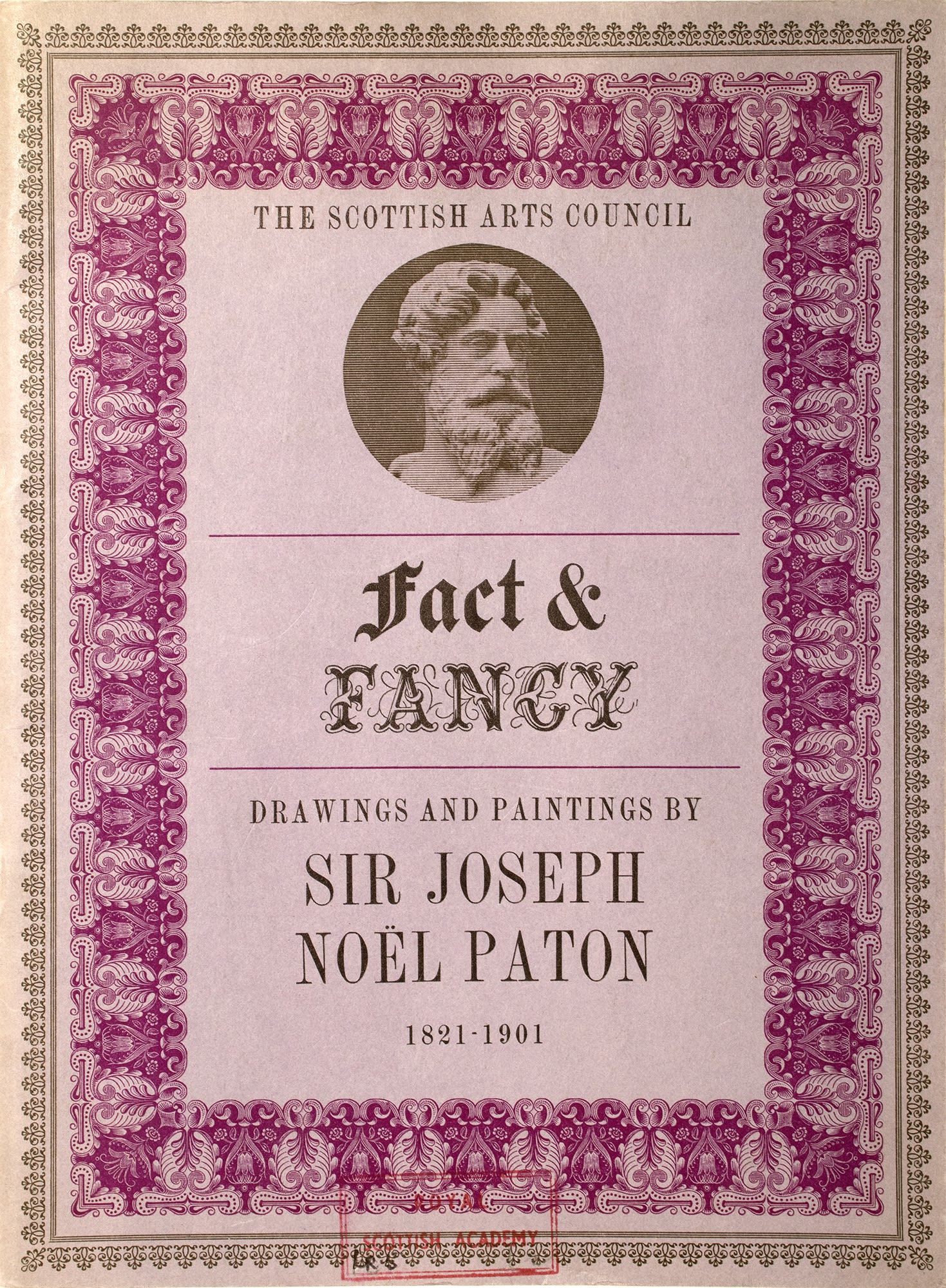
Fact and Fancy: Drawings and Paintings by Sir Joseph Noel Paton (1821-1901), The Scottish Art Council, April 1967
Sadly a major exhibition scheduled to have been mounted this year in Dunfermline to mark the bi-centenary of his birth has had to be postponed until 2023. That will hopefully go some way towards opening a discussion on the re-evaluation of a man described by the great Victorian writer on art John Ruskin as; “the genius of Edinburgh, more of a thinking and feeling man than a painter, but not a bad painter.”

